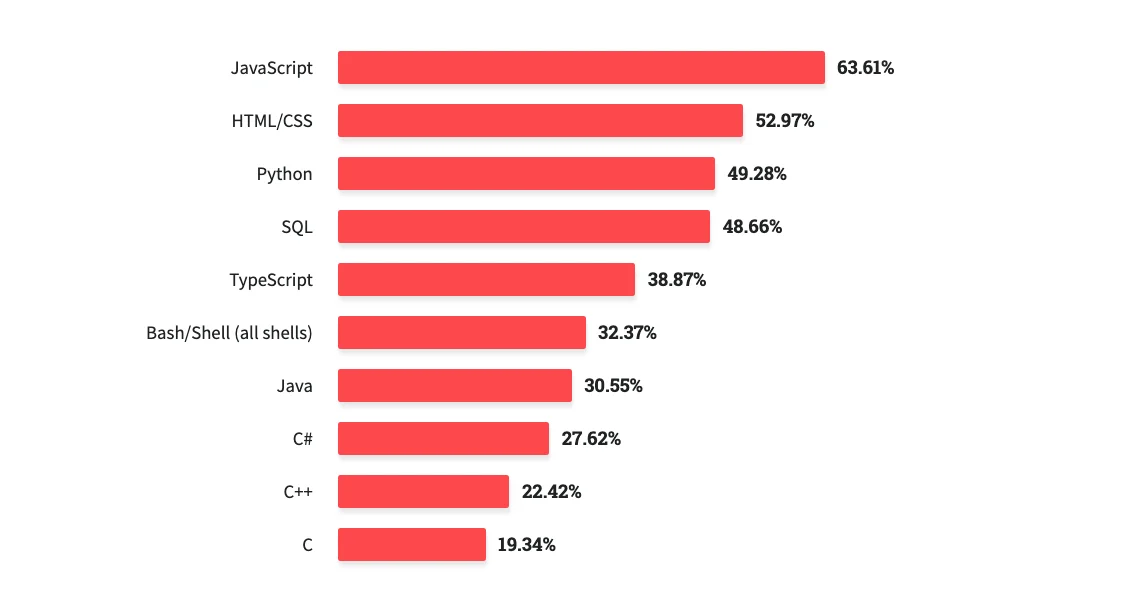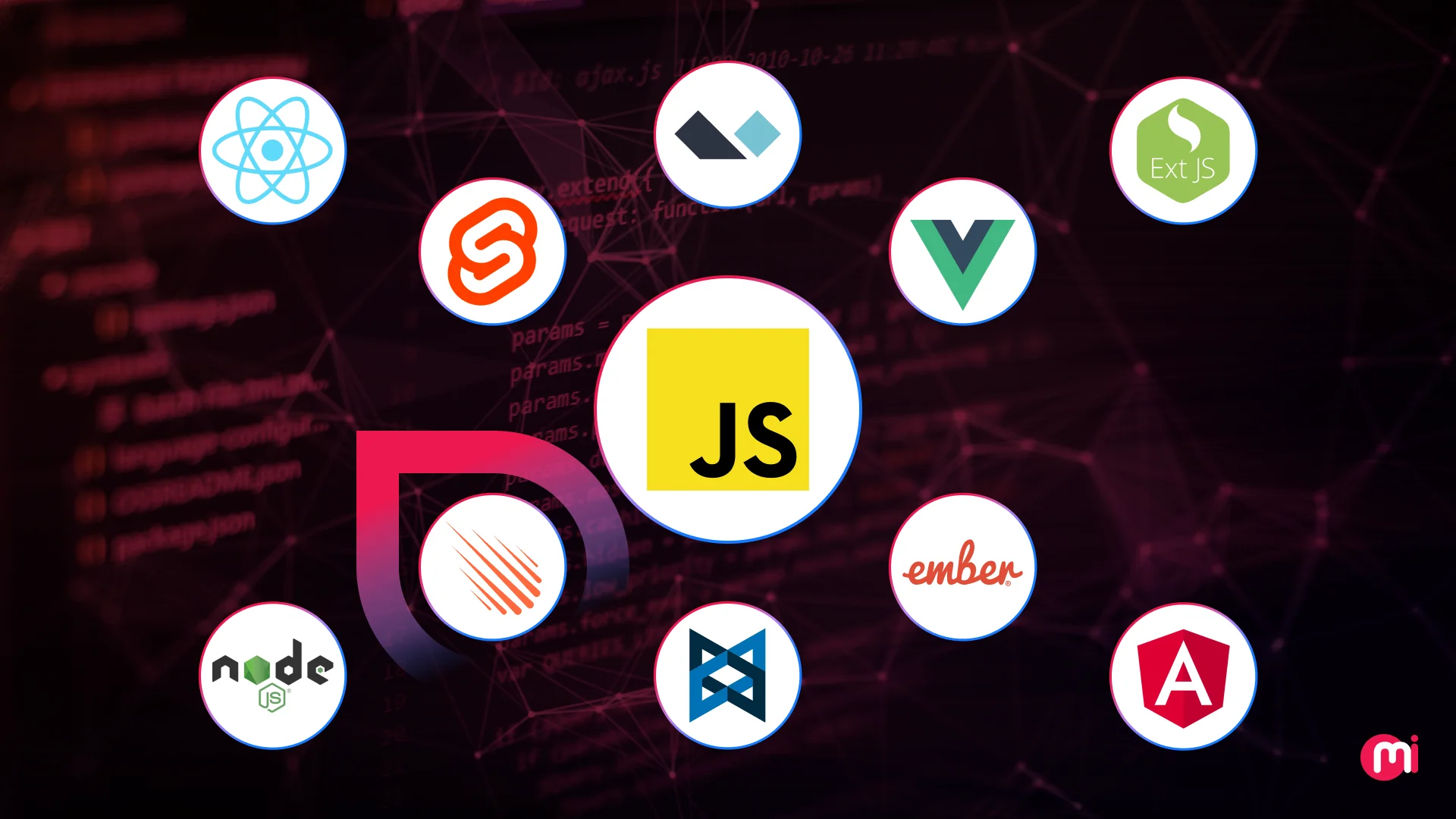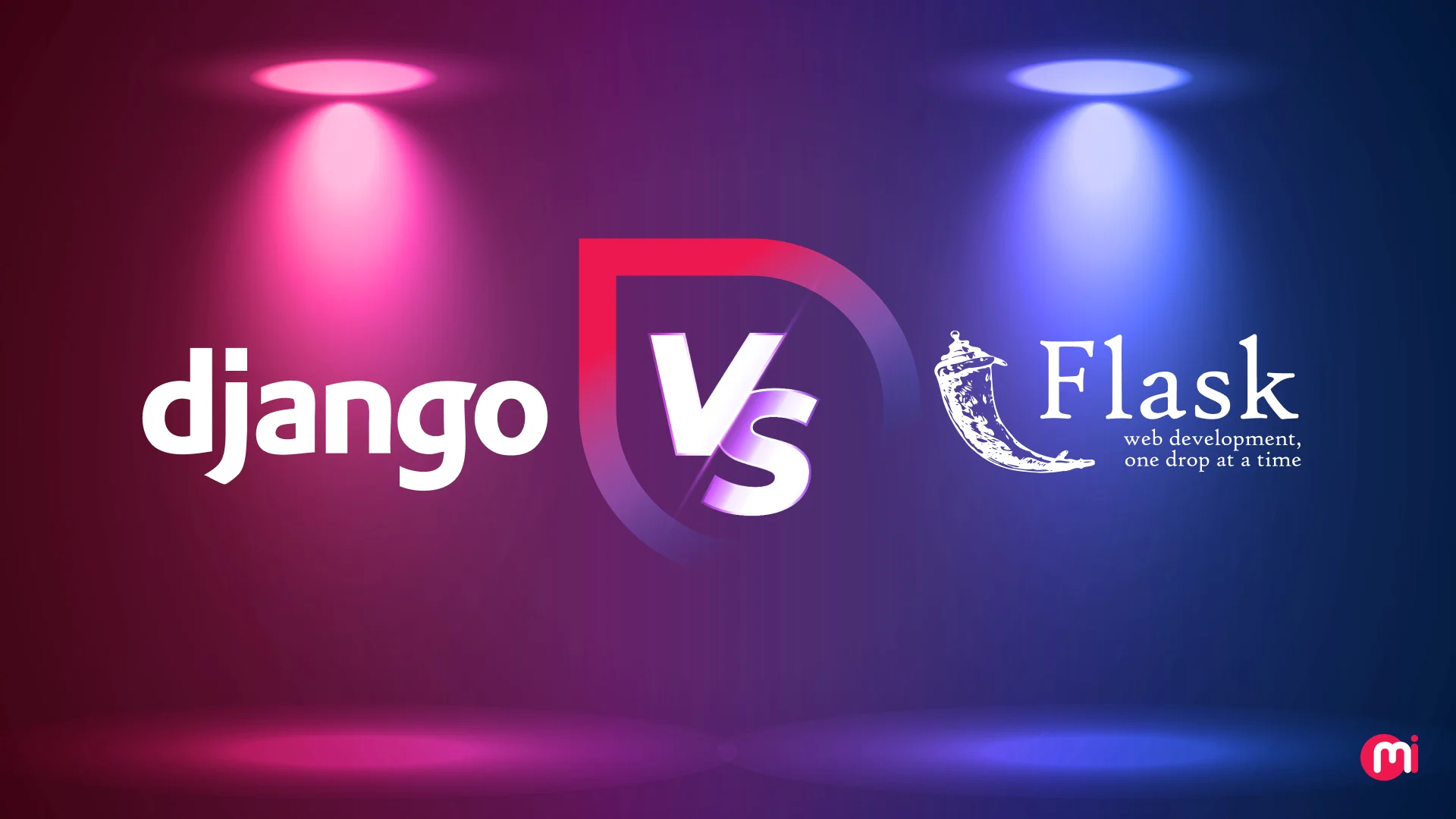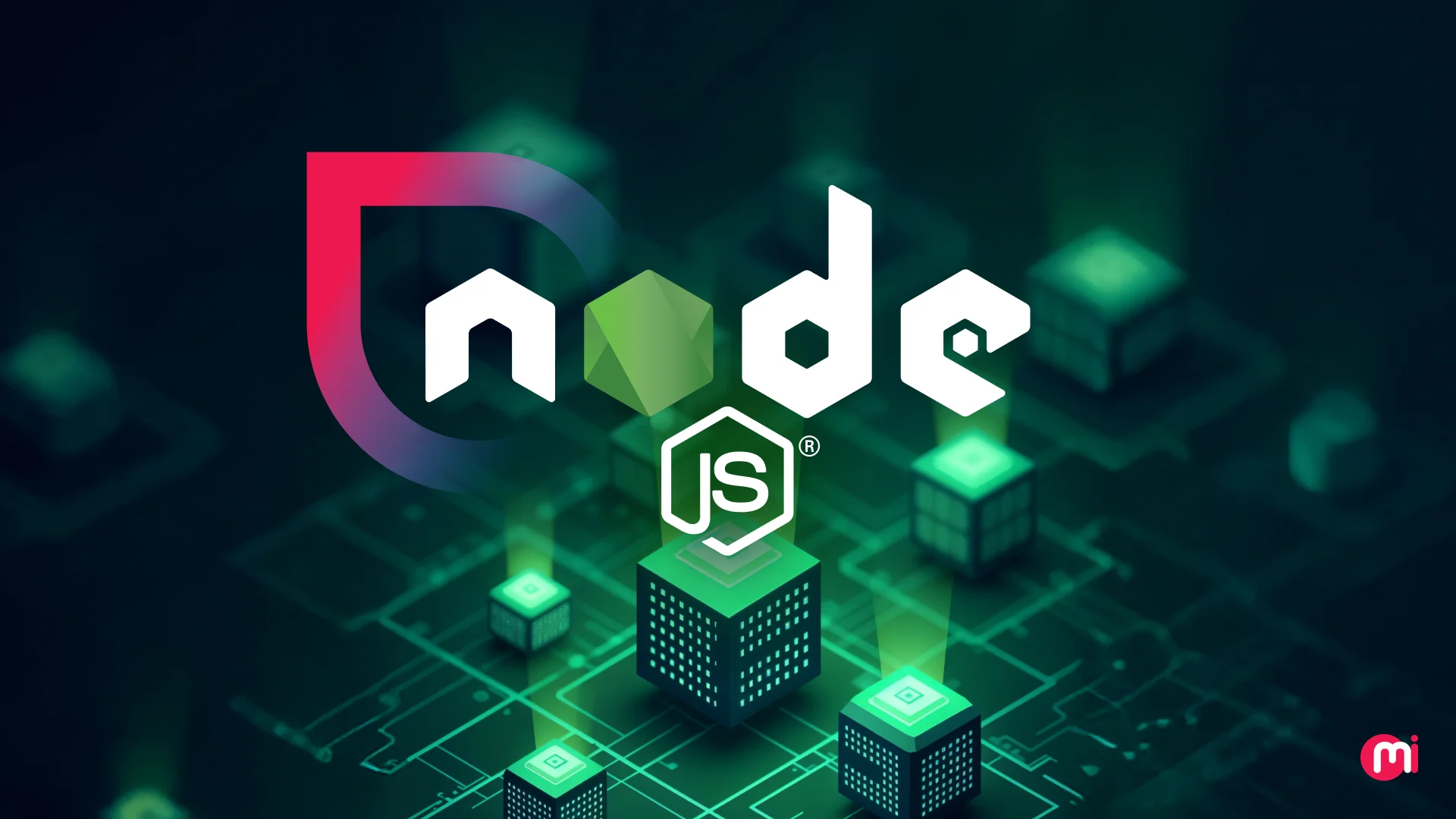Top Python Frameworks for Web Development
- Web
- April 29, 2024
From web development to machine learning and beyond, the Python programming language helps to build many robust applications. However, writing an entire application code in Python can be a frazzle for developers in a world where businesses need quick deliverables. Discover the top Python frameworks revolutionizing software development and empowering developers worldwide.
Python stands as the simplest and most powerful, its versatility and object orientation make programming easy and effective. Python web development framework is an ideal programming language for quick data analysis, scripting and web development. Because of its simplicity, it further enables modular programming and code reuse, thus, cutting the cost of program maintenance.

With code readability and proper use of whitespace at its core, Python has overtaken SQL and secured its place in Top-3 commonly used languages with 49.28% of developers’ votes. Because of this, Python for Enterprise app development is widely in focus.
To accelerate tasks and take care of the nuances of execution, developers heavily rely on frameworks– packages and modules that let them write web applications without the need for process management.
Most Popular Python Frameworks for 2025
You’ll find many results of Python frameworks, but how many of them are up-to-date, robust, and developers’ preferred? Below we have mentioned top Python frameworks that our Python developers use for software development projects:
1. Django
Type: Full-Stack Python framework
Django is a free, open-source, high-level framework. It allows developers to rapidly and flexibly work on complex codes and applications. It further makes use of pragmatic designs so the process of web application development can be streamlined.
Django supports databases such as PostgreSQL, Oracle, MySQL, and SQLite – a reason why it is extensively implemented in high-traffic sites and social media platforms like The Washington Times, Mozilla, Bitbucket, Disqus, Instagram, and Pinterest.
Additionally, Django’s adherence to the “Don’t Repeat Yourself” (DRY) principle make it a favorite of Python experts. Overall, Django is one of the most sought-after full-stack frameworks because it enables hassle-free Python web development, incredible effectiveness, reusability of components and less coding.
Also, it offers security and allows developers to steer clear of common mistakes such as clickjacking, cross-site scripting, forgery, and SQL injection.
Advantages of Django
- Ninja Speed
- Feature Rich
- Security
- Versatility
- Scalability
2. Flask
Type: Microframework
Flask is a micro framework that comes with a built-in development server and debugger.
However, it does not contain any built-in database interaction. To compensate, the Flask-SQLAlchemy package connects web applications built on Flask to an SQL database using only the database URL.
Additionally, this one is BSD-licensed and supports unit testing. It allows for establishing secure client-side sessions and is compatible with Google App Engine. Modelled along the lines of the Sinatra Ruby framework, Flask requires the Werkzeug WSGI toolkit and Jinja template.
It is lightweight and showcases a high degree of adaptability. The best part – Flask developers can enjoy building robust web applications using any kind of extension!
Advantages of Flask
- Unicode-based
- Built-in Debugger
- Built-in Development Server
- Jinja Templating
- WSGI 1.0 compliance
- Plugin Support for any ORM
- Unit Testing Support
- Cookie Support for Client-Side Sessions
- HTTP Request Handling
- RESTful Request Dispatching
Django vs Flask: Python Web Frameworks Comparison
3. Pyramid
Type: Full-stack framework
Pyramid is a mega Python framework that can decide on behalf of the user. However, the latter has to befit the framework’s viewpoint so it doesn’t end up in a clash of opinions. Pyramid is lightweight, transparent and quality-driven, which makes it all the more appealing. It is also ideal for prototyping ideas and handling API projects effectively.
As the web application grows, Pyramid stops making decisions. To that end, it always aims at achieving the fullest with minimal complexity.
Although the framework is suitable for small as well as large-scale web applications, it is perfect for creating growing web applications such as CMS. Its high extensibility allows developers to easily integrate third-party libraries and components to extend its functionality according to project requirements. But how it’s done, by leveraging its reusable subsystems.
Also, it delivers the utmost flexibility when it comes to authentication and authorization. Its security arrangements are reliable and simplify the process of setting up and accessing control records.
The best thing about Pyramid is its commitment to API stability and delivering bug fixing checked on 120+ software releases. Its 100% test and thorough documentation coverage define Pyramid as a reliable tool ensuring future-proofness. With each new update, Pyramid contributors aim to make it even more top-notch.
Another interesting feature of this full-stack framework is its Traversal framework, which enables URLs to be mapped to code and makes developing RESTful APIs simple. Tech giants like Mozilla, DropBox, SurveyMonkey and Yelp are known to leverage its incredible features.
Advantages of Pyramid
- Predicates and Renderers
- Templating and Asset Specifications
- Traversal Framework for URL to Code Mapping
- Single-File Applications
- Flexible Authentication and Authorization
- Lightweight
- Extensibility
- Function Decorators
- Future Proofness
4. CherryPy
Type: Microframework
CherryPy is open-source, just like Django. Additionally, it is object-oriented, platform-independent and comes with its own HTTP/1.1-compliant WSGI multi-threaded web server, supporting a minimalistic approach.
Interestingly, it allows users to contribute! Any web application developed using CherryPy can be run on all Python-supported OSs, including Linux/Unix, Windows and Mac. It won’t need an Apache server at all.
The framework allows quick development of smaller source codes. Apart from the thread-pooled web server, it also includes features such as module framework and setup framework that simplify data access, templating, and handling of sessions, files, cookies, and uploads. Applications built using this framework act as stand-alone applications embedded with a multithreaded server.
It further carries built-in support for documentation tasks such as profiling, coverage, and testing.
With CherryPy, developers can run multiple HTTP servers at the same time. This microframework contains tools for default caching, encoding, and authorization. It is super fast, super stable, and super reliable.
Advantages of CherryPy
- HTTP/1.1-compliant WSGI thread-pooled web server
- Multiple HTTP Server Support
- Powerful Configuration
- Flexible Plugin
- Minimalism
- Quick Development Time
- Android Compliant
5. Tornado
Type: Asynchronous framework
Tornado is a Python web framework and asynchronous networking library built to be scalable.
This framework uses non-blocking network I/O to scale to thousands of open connections. Thus, it is perfect for WebSockets, long polling, and web applications that need a long-lived connection for each user. Also, it is ideal for resolving the C10k issue.
Tornado further comes with an in-built HTTP server, which allows it to serve the applications. For application development that demands high performance and support for concurrent usage, this one is an extraordinary Python framework.
Advantages of Tornado
- Non-Blocking HTTP Client
- Real-Time Services
- High-Quality Performance
- High-Quality Output
- Web Templating
- Support for User Authentication
- Support for Third-Party Authentication and Authorization
- Interpretation and Localization Support
6 Grok
Type: Full-Stack Framework
Grok is an open-source Python web framework designed with Zope Toolkit (ZTK) technology. Designed with a mission to create a tool that’s easy to use, and that supports rapid application development, Grok enables agile development for developers by choosing convention-over-configuration and DRY (Don’t Repeat Yourself).
Using Grok, a developer can access a wide network along with independent libraries and choose according to the requirements of the task. This framework comes with a UI that is similar to Pylons, Django, and TurboGears.
It has a component architecture of Python, which comes with many defaults and conventions, enabling developers to reduce the unpredictability of app development with the help of views, content objects, and controllers.
Overall, Grok offers the building blocks that are required to build worthwhile custom web apps.
Advantages of Grok
- Enhanced Web App Development
- Support for Custom Web App Development
- Upsurging Core Technology (Martian’s grokcore.component)
Types of Python Frameworks
The primary types are three – full-stack, microframework and asynchronous. Developers can select them based on project requirements and individual preferences. Let’s discuss the types of Python web frameworks in brief:
Full-Stack Framework
These frameworks provide developers with full support. Full-stack frameworks are like a one-stop destination that includes everything – right from form generators to form validation and template layouts. In short, you can utilize Full-Stack frameworks to get support for database, frontend, and backend development services.
Microframework
As the name suggests, a microframework is lightweight with limited features and functionalities. Microframeworks only offer limited components sufficient for building a minimalistic application.
So, if you are looking for form validation, database abstraction layer, project-specific tools, and libraries, these frameworks would not be your ideal fit.
However, if there’s a requirement to write the code part manually for customization requirements, microframeworks offer the best help to developers.
Asynchronous Frameworks
These are relatively recent. These frameworks are similar to micro frameworks but enable developers to handle concurrent connections in bulk. Asynchronous frameworks feed on Python’s Asyncio library.
How MindInventory Can Help
There are so many Python web frameworks – you could be left spoilt for choice! But this list should make it easy for you to choose one.
Still confused? Let MindInventory help you choose the right Python framework as per your application objectives. Share your project requirements with us, schedule an appointment to consult our Python developers, and get the best-fit technology stack curated that meets the same.

FAQs on Python Frameworks
Well, this is a tough question to answer as both Django and Flask frameworks are widely used by Python developers. However, when it comes to choosing a framework for larger and more complex projects, Django is the power choice. And for simpler or microservices-based applications, Flask is often selected by Python developers.
It’s unlikely that FastAPI will completely replace Django, as they serve different purposes and have different strengths. While Django is a well-established, full-stack web framework that is robust in handling various aspects of web development, FastAPI is primarily focused on building high-performance APIs with minimal code, leveraging asynchronous programming to handle concurrent requests efficiently.
Yes, FastAPI can be a good choice for building machine learning (ML) APIs. FastAPI’s asynchronous capabilities and high performance make it well-suited for handling the computational demands often associated with ML tasks.
Choosing FastAPI over Flask offers several advantages, particularly for projects that require high performance, scalability, and modern asynchronous features. However, the choice between FastAPI and Flask depends on the specific requirements and goals of your project.
Choosing the best Python framework for AI depends on various factors such as project requirements, developers’ familiarity with the framework, performance needs, community support, and integration with other libraries. Some of the popular Python frameworks for AI/ML tasks include FastAI, FastAPI, PyTorch, Keras, TensorFlow, etc.













